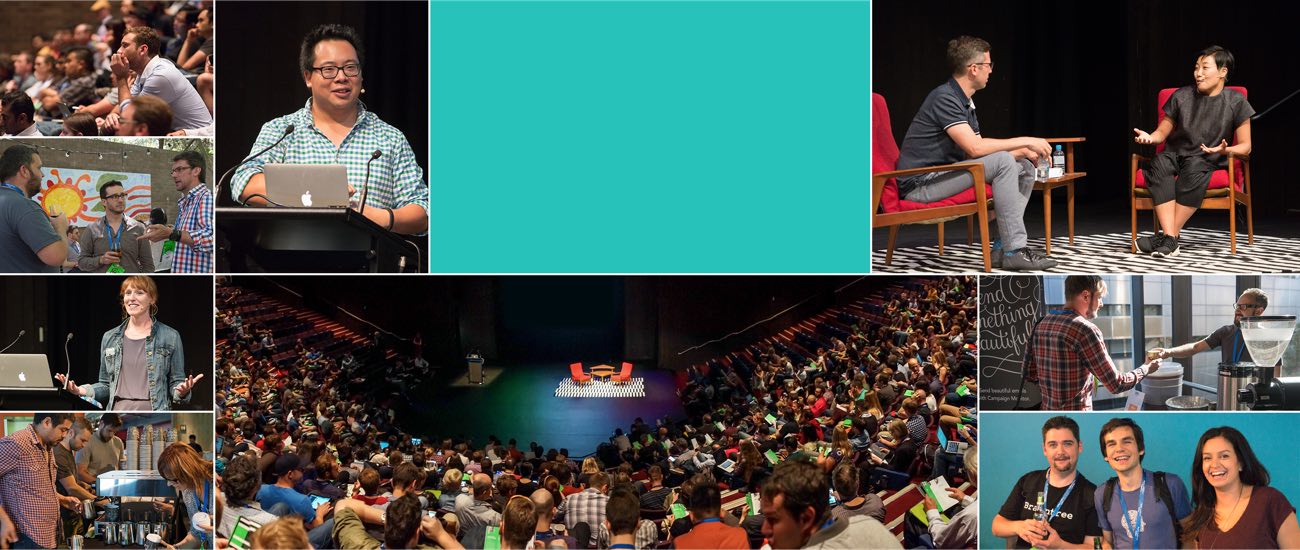Web Directions 2015 is over. But we've got many more events lined up for 2016.
See our extensive lineup of 2016 events. Our first conference, Respond 2016, focussing on modern, responsive Web design, is held in Sydney and Melbourne in early April, and features a stellar lineup of international experts, including, the inventor of Responsive Web Design, Ethan Marcotte.
Global Knowledge
Take the world's leading digital creatives, like Buzzfeed Creative Director Cap Watkins, ground breaking strategists like Deputy Director (Digital Strategy), UK Government Digital Service, Tom Loosemore. And industry leading engineering talent, like Patrick Hamann from the Financial Times.
Mix in an atmosphere decidedly unlike any you've experienced at a conference. Add parties, bespoke espresso and pour-over coffee, and all manner of experiences to engage, delight, and stimulate your creativity and conversation. And that barely begins to do justice to the event that is Web Directions.
Now you're thinking, "it sounds awesome, but I can't afford the time to take two days off no matter how good this might be". But the question really is, in such a fast moving industry as ours, can you afford not to?
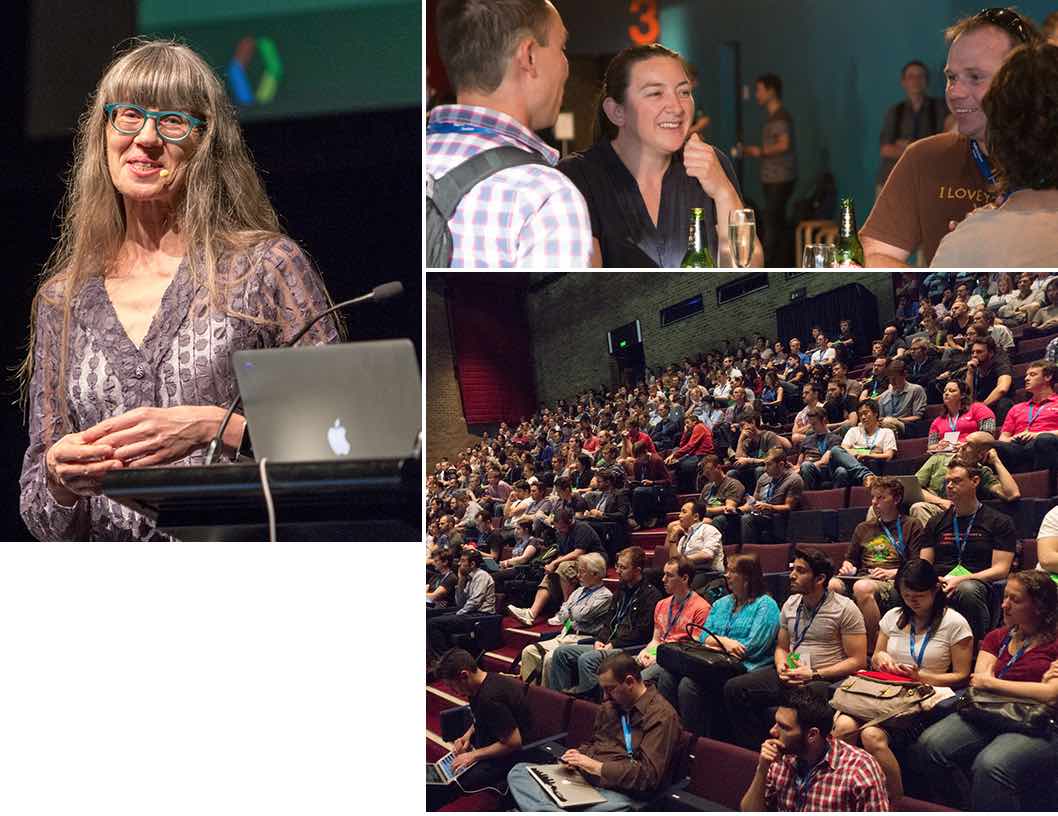
If you're in Design or Product
- VPs and Heads of Product
- Product management
- Creative direction
- Web design
- Interaction design
- Creative technology
- User Experience
- User Research
- Content strategy
Engineering & Development
- VPs of Engineering
- Engineering managers
- Technical Directors
- Front-end engineers
- Front End Ops
- JavaScript developers
- Web development
- App development
- CIO
- CTO
700
Passionate Attendees
24
Transformational Speakers
2
Unforgettable Days
1
Iconic Location
Web Directions is the must-attend event of the year for anyone serious about web development.
Phil Whitehouse, General Manager, DT Sydney
I’ve been admiring the Web Directions events for years, and was honored to be part… What a fantastic event!
Ethan Marcotte, inventor of "responsive Web design"
Out of any conference, Web Directions is far and away our favourite
Dave Greiner, founder, Campaign Monitor
Keynotes
Start and end each day with inspiring, challenging, big picture talks from our industry's sharpest minds.
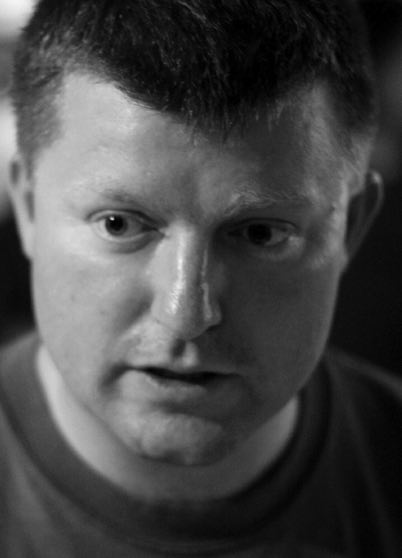
Tom Loosemore
Deputy Director,
UK Government Digital Service
Keynote: Tom Loosemore
Enough lipstick on pigs: Building new foundations for a 21st century state
Many governments are busy digitising their existing institutions and services. Too often, they're digitising an analogue government, locking in the waste, delay and frustration inherited from the era of filling in paper forms. Bad mistake. A nation bold enough to invest in new, natively digital foundations can transform the simplicity and cost of public services and unlock innovation far beyond the public sector. Based on experiences in the UK and around the world, Tom will explain how.
Tom Loosemore is a founder of the UK's Government Digital Service (GDS), and is now its deputy director.
GDS was established in 2011 to ensure the UK government offers world-class digital products that meet people’s needs.
Since 2012 GOV.UK has replaced hundreds of websites, winning Design of the Year and saving £60m in the process. It has also digitally transformed 25 of the most significant transactional public services.
Prior to GDS, Tom ran the digital innovation arm of Channel 4. He was responsible for the BBC's internet strategy between 2001 and 2007, after launching its first sport websites in the late 1990s.
From the late 1990s he was the driving force behind a raft innovative e-democracy sites including TheyWorkForYou.com, and later helped found mySociety, the world’s leading e-democracy charity.
Earlier in his career Tom was an editor on the UK edition of Wired Magazine, and founded local information startup UpMyStreet.com

Hannah Donovan
Product Design Lead, Drip
Keynote: Hannah Donovan
Souls & Machines: Designing the Future of Content
Not too long ago, it seemed like big data and collaborative filtering were going to solve our desires for discovery and inspiration. At the same time, platforms dedicated to new methods of self expression – music, writing, video etc. – have matured, and their new forms of content have become mainstays of our culture.
Today, content companies are adapting to become digital products, and tech companies are learning to make content. How does a product designer navigate this changing landscape? What are the answers to questions like “humans vs. computers”; “pro vs. user-generated content”; and “opinion vs. democracy”? This and more will be answered through case studies, experiments and of course, stories. Come to learn, stay for the fun :)
Hannah Donovan is a designer and speaker based in New York City. She's worked at the intersection of music, design and technology for the last decade, making digital products in music and entertainment. She currently Product Design Lead at Drip.
Previously, Hannah co-founded This Is My Jam with incubation from The Echo Nest, led design at Last.fm in London, and designed for youth-focused brands in Toronto.
She’s a classically trained cellist who loves hip-hop and R&B, as well as a classically trained graphic designer who loves bold patterns, clashing textures and type. She also loves tigers, but isn't classically trained to tame them.

Cap Watkins
VP of Design at BuzzFeed
Keynote: Cap Watkins
Design Everything
We talk a lot about design-driven organizations and user-focused design practices. But how do you get your organization bought into that in the first place? How do you convince people that starting with design is the good and right thing to do? We’ll talk about strategies for winning hearts and minds, building trust and ultimately designing not just the product, but your entire organization.
Cap Watkins is a product designer living in Brooklyn, NY. He’s the VP of Design at BuzzFeed, as well as a blogger, conference speaker, podcast guest and lover of startups and technology. Cap believes in thoughtful, holistic design solutions that get out of the way and empower people to accomplish more. His past work includes Etsy, Zoosk, Formspring and hush-hush stuff at Amazon.
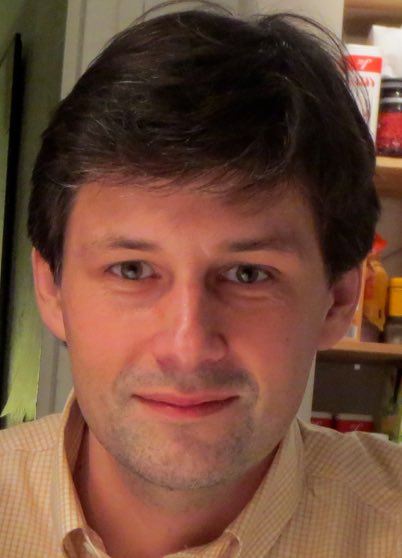
Maciej Ceglowski
Founder, Pinboard
Keynote: Maciej Ceglowski
The Website Obesity Crisis
For the first time in the history of the Internet, the computers people use to get online are getting slower, smaller, and harder to interact with. Nobody minds the change because the mobile web is so incredibly useful in our daily lives. But while our devices have been getting slimmer, our websites are getting huge. Why is it so easy to blow out a data plan with a few injudicious taps of the finger? What is driving the bloat when everyone claims to hate it? And why do more capable browsers and faster networks only seem to make the problem worse?
It's time for some tough talk about frameworks, surveillance, advertising, animation, and phones that get hot to the touch when you check the weather.
Maciej Ceglowski is the founder and sole employee of Pinboard, a personal web archive and bookmarking site with an emphasis on user privacy. He's been an outspoken advocate the decentralized, open web as a counterweight to the excesses of Silicon Valley startup culture. . Before founding Pinboard in 2009, Ceglowski worked as an engineer at a variety of tech companies, most notably Yahoo. He lives and works in San Francisco
Product & Design
For designers, product owners and managers, creative and art directors, and strategists. Learn how design drives product at Google, how Campaign Monitor delivers world class customer service, how user research guides Twitter, and much more.

Alisa Lemberg
Snr. User Researcher, Twitter
Product Stream: Alisa Lemberg
Building Empathy Through Data
Often we think of data as the sum total of user behavior – an abstraction of actual experiences. How might we dive deeper into customer data and take a peek at the real people behind the numbers? In this talk, Alisa Lemberg will share moments from the intersection of qualitative and quantitative research, and reframe data as a tool to bring design and engineering teams closer to user needs.
Alisa Lemberg is a Sr. User Researcher at Twitter where she seeks to uncover the secret sauce behind Internet stardom. Prior to joining Twitter, she was a member of IDEO’s Hybrid Insights team, bridging the divide between the qualitative and the quantitative. She is passionate about finding stories behind the numbers, and learning how to order coffee in new languages.

Denise Jacobs
Founder, the Creative Dose
Denise Jacobs
Hacking the Creative Brain
As tech professionals, what we need is a way to work better so that we can create more, right? In order to have more creative productivity, we need to hack how we use our brains on a daily basis in order to access more of its inherent processing and creative power.
Through exploring various concepts and approaches, including the neuroscience of creativity, productivity techniques, and emerging practices that spur innovation, we'll discover not only the ways in which our brains work best, but also what’s behind the times when we feel on fire with creativity and when we don't. We’ll translate this information into processes and techniques for dramatically enhanced creative productivity. Beware: this talk may change how you work…for the better.
Denise R. Jacobs is a Speaker + Author + Creativity Evangelist who speaks at conferences worldwide and consults with companies and individuals, teaching techniques to make the creative process more fluid, methods for making work environments more conducive to creative productivity, and practices for sparking innovation. Denise has presented at events and organizations such as South By Southwest Interactive, the BBC, The Future of Web Design, Paris-Web, FITC: Future, Innovation, Technology, Creativity and TEDxRheinMain.
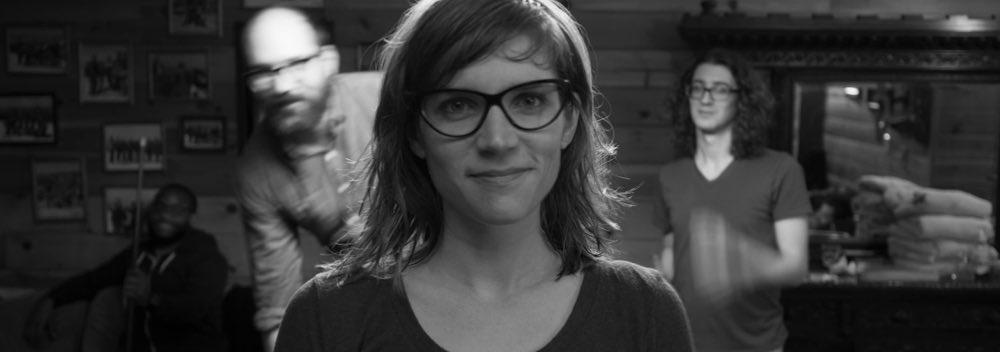
Brynn Evans
Design Lead, Project Fi, Google
Product Stream: Brynn Evans
Beauty of Ordinary Design
Inspired by the book The Beauty of Ordinary Things, this talk is about appreciating ordinary moments in life— ordinary yet nevertheless real. These problems may be unpopular or tricky to solve from a social, political, and design perspective, but the right solution(s) would have a huge impact for the populations affected. I talk about several of these problem areas and related perspectives that designers can take to have more impact in their own work, even if they don't work in one of these areas directly.
Brynn Evans leads design for Project Fi, Google's new wireless carrier. She's been at Google for 4 years, previously leading design for the Google+ Stream. Brynn also runs “gamestorming” workshops on product design, marketing, brand positioning, and leadership development with clients such at Estée Lauder, Apple, McAfee, Google Ventures, and more.

Cameron Adams
Chief Product Officer,
Canva
Cameron Adams
From Zero to Four Million
With digital products, the saying "you never get a second chance at a first impression" is a cold hard fact. There are many hurdles that prevent a potential user from becoming a passionate user and the way that you onboard them to your product can make or break it.
At Canva, we’re quickly approaching 5 million users, and we've learned a thing or two about converting the interested into the engaged. I'd like to share some of our secrets, things you should do and things you should definitely not do to create an engaged user base.
Cameron is a co-founder and Chief Product Officer at Canva, an online design platform that has quickly become one of the most exciting startups in Australia. He has been exploring the frontiers of design & technology for over 15 years, and his reputation for creating cutting edge experiences has been earned while working on projects at Google, TEDx and in New York's Times Square.
Alongside his practical experience implementing and leading design teams, he has toured the world as a speaker and written several books focusing on the design and technology underpinning modern digital products.
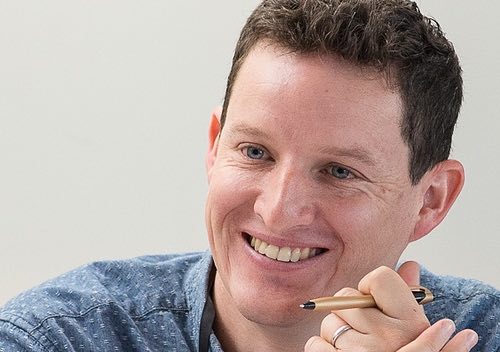
Mathew Patterson
Head of Customer Service,
Campaign Monitor
Product Stream: Mathew Patterson
I want to talk to a real person — Customer Service as a core feature
If everyone agrees that customer service is important, why does customer support suck so badly so often? How do some teams provide consistently exceptional service while others drive customers away? And why does Campaign Monitor not try to make customers happy?
Learn how Campaign Monitor embeds customer service into the heart of the company and the product, and how you can do it too.
Mathew Patterson spends his days looking after the customer service team at Campaign Monitor so they can look after our customers.

Martin Charlier
Author, Design Consultant
Product Stream: Martin Charlier
Designing Connected Products - How UX for IoT is different
The Internet of Things adds both capability and complexity to products and services. We’re moving beyond glowing rectangles and the physical dimension gains importance again. This is stretching the limits of conventional UX design. This talk is about how design for IoT is different, what makes it more complicated and what you need to be aware of when working on connected products.
Martin Charlier is designer specialising in the intersection of digital and physical. His background is in industrial design, he works a lot in UX and service design and his key interest is in connected products. He’s a co-author of ‘Designing Connected Products’, a co-founder of Rain Cloud (which is a project exploring new interactions with connected products) and a freelance design consultant.
Martin has previously worked at Frog Design, Fjord and Random International. Recent projects include work with a predictive analytics startup as well as on the community platform IoT Academy.
Martin co-authored the book ‘Designing Connected Products’, am a co-founder of Rain Cloud and am a freelance design consultant.

Robert Tilt
Interactive Lead, Isobar
Robert Tilt
VR: Discovering a New Medium
Do you remember the dream of virtual reality? Immersed in a virtual world, your only limitations were your imagination. VR could have been a way to experience the wonders of our - or any - universe. It could have been the ultimate escapism. To our dismay, the real reality was giant headsets, poor graphics and limited interactions.
Well, times have changed! With the evolution of mobile technology over the last 20 years, hardware has reached a tipping point. The big players are getting on board with Facebook buying the Oculus Rift, Sony making their own headset and Samsung and Google introducing lower cost alternatives.
But what about the content? Fresh from delivering one of the most innovative and ambitious projects across multiple markets for General Motors, Rob will share the unique challenges and experiences that come with creating multi-sensory experiences in the virtual and physical worlds.
Robert Tilt is the Interactive Lead at Isobar Australia, where he both leads the Sydney front-end team and bridges the gap between technology and creative.
Having a diverse formal background of fine art, computer science and advertising, he sources and evaluates new technology and how it can be used to enable creative ideas.
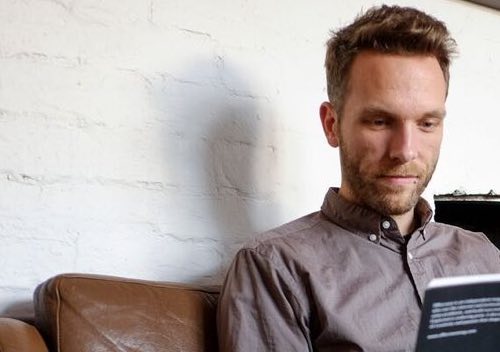
Kai Brach
Founder,
Offscreen Magazine
Kai Brach
Power to the Indies!
The internet is enabling a new generation of indie makers that break away from established rules and force big companies to rethink their business models. In this brief talk, Kai shows how his one-man publishing business (creating a print-only magazine called Offscreen) aims to be great without being big. If you run a small product business and sometimes wonder whether it's worth the daily grind (spoiler: it is!), this talk is for you.
Kai Brach was a web designer of ten years before starting a print-only magazine in early 2012. As a one-man operation, he is the publisher, editor and art director of Offscreen – a publication about people who use the internet and technology to be creative, solve problems, and build successful businesses. He resides in Melbourne and periodically in Berlin.

Rose Matthews
Service Designer,
Fjord
Rose Matthews
Financial Inclusion in the Solomon Islands
The Pacific region has long been considered in need of development. Countless projects from around the world have intervened over the decades and yet there’s been very little real change for the people. Could a human-centred design approach finally create the opportunities remote community dwellers desire? In 2015 Fjord and Good Return partnered up to find out.
A self-described ‘nosey person’, Rose has worked on user-centred design projects across the world with a heavy focus on financial and public sector services. She’s currently leading service design engagements for Fjord’s studio in Sydney, as well as following her passion in charitable causes.

Nathan McGinness
Director of Product, Edrolo
Nathan McGinness
The perils and pitfalls of A/B testing
We work in an environment where metrics are immediate, and it’s alluring to believe our impact on them is easily split, measured, and determined. We’re also promised, by an abundance of new analytics products, that testing is easy, fast, and that we’ll be making better decisions with less effort.
The reality is that A/B testing is really difficult. I’ll share real-world experiences to show how A/B testing can distract, slow, and cause energy to be focussed on solving the wrong problems. We’ll also walk through some scenarios where the chances of testing success is likely to be increased.
Nathan is the Director of Product at Edrolo – a fast-growing education start-up based in Melbourne. Before that, he led design at Topguest – a customer analytics company from San Francisco which was acquired just 18 months after founding. He learnt his craft at digital agencies here in Australia, with the world-class teams at Icelab and Digital Eskimo.

Alastair Simpson
Head of Design, Confluence
Alastair Simpson
Designer spaces
You can't take creative people, stick them in sterile, lowest cost per square foot spaces, and expect them to achieve the best work of their lives. At Atlassian, we've been focussing heavily on the design of our work spaces, to create flexible, engaging, delightful, and yes productive places for our teams to work in.
It's about a lot more than foosball tables and beanbags, and we think what we've learned can have value from a freelancer's home office, to entire buildings (like ours). As our organisation has evolved from its engineering roots to incorporate a large design team, so have the needs of our office space to help us work together as multi-disciplinary teams.
Hear Alastair Simpson and Nat Jones from Atlassian talk about the creative spaces they've designed that have scaled with the changing needs of their teams and what they've learned about the benefits of creating better environments through thoughtful design.
Alastair has 10 years of experience in user experience design at large growth focussed businesses. Alastair is currently Head of Design for Confluence.
He is a passionate advocate of using lean customer centric design and design thinking methodologies to solve complex business problems and has helped many teams see its benefits and transition to leaner approaches to product development. Previously Alastair worked at global publishers Reed Business Information as well as a digital consultancy firm consulting to Qantas, FOXTEL and Telstra.
His areas of expertise include design thinking, lean customer centric design, and program management.
Nat has 10 years of experience in user experience design working both client and agency side. Nat is currently a UX Designer at Atlassian, working on the customer purchasing lifecycle. Nat has a deep interest in visual design and how this can connect customers to products.
Previously Nat worked at M&C Saatchi, Publicis Mojo and the White Agency before arriving at Atlassian.
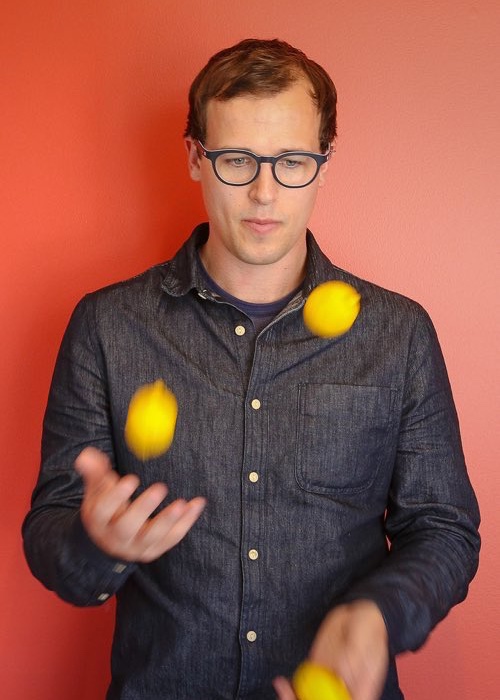
Dan Burka
Design Partner, Google Ventures
Product Stream: Dan Burka
Build for Speed: How to Prototype and Test Any Product in Five Days
The current methodology for building applications is broken. Most teams go through the classic agile pattern: ideate, build, launch, measure, iterate, repeat. Even when executed efficiently, this process stifles innovation under the burden of engineering and product launching. Using real-world examples, Daniel will show how to test your theses more quickly and increase the overall effectiveness (and happiness!) of your whole team.
Daniel Burka is a design partner at Google Ventures. He works with the venture funds’ many portfolio companies to solve their design challenges. Daniel has had a varied career that included co-founding an agency (silverorange), design directing at startups (Digg and TinySpeck), and founding two startups (Pownce and Milk). When Milk was acquired by Google, Daniel ran a mobile-focused design team there before moving to Google Ventures where he gets to work on everything from robots to apps to wearable therapeutics.
Engineering & Code
For Front End Engineers, web developers, devops and CTOs. The lastest on responsive design, CSS & JavaScript, to help you deliver faster, more secure, more engaging sites and apps. With, as always, the world's leading engineering experts.

Kitt Hodsden
Front End Engineer, Shopify
Engineering Stream: kitt Hodsden
Automation for Developer Happiness
You’ve done what you need to do to create a functioning, responsive, good-looking site that works blazingly fast in your development environment. How sure are you, however, that it performs well for your users? Does it render quickly? Does it respond well to user input? Where are the bottlenecks of your site? More importantly, can you increase both the perceived and actual speed of your site?
Let’s take a dive into tools for checking site speed and improving site performance. We’ll review the available tools for cross platform, multi-device front-end performance testing, find bottlenecks, simulate our users’ experiences on our site, then automate those checks using Grunt and good old-fashioned shell scripting. In the end, we’ll be able to see how our site changes have affected our site performance, and what steps we can take to increase perceived and actual site speed.
Kitt Hodsden is the 47th laziest developer in the world, a feat which takes considerable effort. Kitt enjoys preaching the gospel of lazy productivity, and hopes to encourage you to automate as much as you can of your work. Kitt is founding director of Hacker Dojo, a community center for hackers, tinkerers, creatives and creators. She is currently a developer at Shopify, having previously been at Phase2, Twitter, and Dreamworks.

Eric Elliott
Author & Developer, Parallel Drive
Engineering Stream: Eric Elliott
The Two Pillars of JavaScript
Software is eating the world, the web is eating software, and JavaScript rules the web. Learn why JavaScript's distinctive features make it well suited to its position as the most popular programming language in the world.
JavaScript popularized two paradigms in mainstream programming that I collectively call "The Two Pillars of JavaScript": Prototypal OO and Functional programming.
The two pillars are essential concepts to learn because they're widely used in industry leading apps from companies like Facebook, NetFlix, Instagram, PayPal, and Microsoft. Why not put them to work for you, too?
Compassionate entrepreneur on a mission to end homelessness. #jshomes Javascript, tech education, electronic music, photography, film, viral apps.

Jeremy Nagel
Developer, Learnosity
Jeremy Nagel
Checklist Driven Development: ticking boxes to avoid ticking off customers
Bugs are not fun. High profile programming disasters such as the crash of the $125 million Mars Orbiter and the deaths of three patients from the Therac 25 radiation therapy machine reveal just how destructive human error can be. How can we prevent these errors from happening? Atul Gawande, author of 'The Checklist Manifesto' argues that checklists are the answer. In this talk, Jeremy will outline some lessons from adding checklists to the dev workflow at Learnosity. You can expect a blooper reel of amusing and avoidable bugs, expletives from disgruntled engineers when checklists were first added, examples of checklists in use and some principles for when not to use checklists.
Jeremy loves checklists and is prone to forgetting his keys unless he ticks off his packing list each morning. He has made many an embarrassing mistake during his four years in web development and likes to pretend that this is not because he is a bad programmer but simply because there weren't enough checklists and automated tests to save him.
When he's not annoying his colleagues at Learnosity by asking them to fill out checklists or write excessive numbers of automated tests, he enjoys running, cross country skiing and playing with quantified self toys.
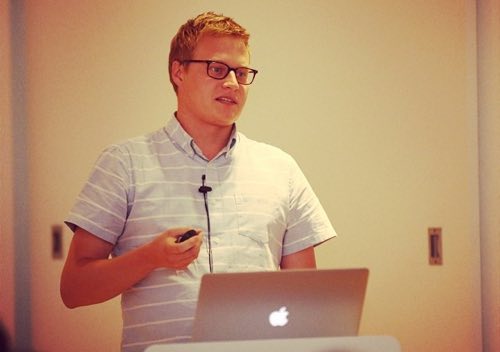
Patrick Hamann
Front End Engineer,
Financial Times
Engineering Stream: Patrick Hamann
Embracing the network
The network is intrinsically unreliable. More so, the network is out of your control as a developer. Therefore, we must design systems which embrace the unpredictability of the network and defend against it all costs. How can you prioritise the delivery of your core content? What best-practices can you use to optimise your assets? How are APIs such as ServiceWorker changing the way we think about the network?
Patrick is a front-end engineer at the Financial Times in London where – amongst other things – he is helping to build the next generation of their web platform. Prior to the FT he spent the last 3 years developing theguardian.com. When not speaking or ranting about performance he enjoys spending his spare time discovering new food and craft beer.

Courtney Hemphill
Partner,
Carbon Five
Engineering Stream: Courtney Hemphill
Algorithms for Animation–Simple Formulas to Activate for UI
Animations don’t just make things look cool, they provide context and additional details. Animations give us a third dimension with which to communicate: time. The real world doesn’t move in a perfectly linear fashion and when we see things that do, it feels awkward and unnatural. With motion, the difference between dull and delightful often comes down to the math.
This talk walks you through the basic principles of animation design and the simple formulas that can be used to create robust animations. Starting with a quick introduction into interpolation functions and how they can be crafted to represent natural movement we will then see how this translates into software applications. You can create dramatic effects with just a little code. Performance and optimization tradeoffs between CSS3 and Javascript will also be discussed as well as how and when to use the various tools available.
Courtney Hemphill is a partner and developer at Carbon Five, an integrated product design and development firm. As a full stack developer for 10+ years, she enjoys exploring tools and techniques that help integrate designers & developers during the product creation process. Currently, she has been diving into approaches to useful animations in interfaces and how data can capture the true story underlying a user's experience with a product, a company and our world as a whole.
Courtney is a long time member and frequent contributor to RailsBridge, Women Who Code and and Code2040. She often travels to speak and mentor at design and development conferences worldwide. She also finds a healthy amount of time to unplug from the internets, traveling in search of the best rock climbing spots in the world, always returning to her primary stomping ground in Yosemite Valley.
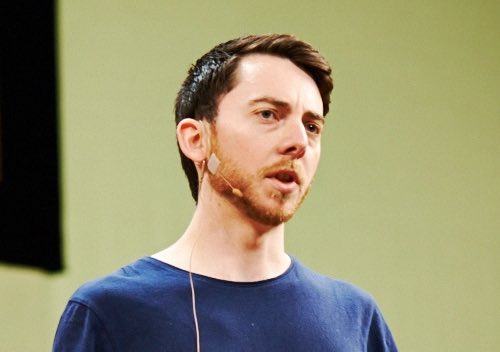
Mark Dalgleish
Front End Engineer,
SEEK
Engineering Stream: Mark Dalgleish
CSS in the Age of Components
Part I: The End of Global CSS
Back at the dawn of time, CSS, once of the first standards from the W3C, came along to save us from table based layouts, spacer gifs, and the font tag. And there was much rejoicing.
But fast forward (nearly) 20 years, and we've long since run into some pretty significant limitations of CSS, particularly when building complex reusable components and sophisticated application like experiences.
Along the way, we've tried various approaches to modularising and otherwise thing the complex beast that is CSS, from OOCSS to BEM to SMACSS. Some developers have even abandoned style sheets altogether in favour of inline styles.
To make sense of this increasingly complex landscape, and to shine a light on the way forward, Glen Maddern and Mark Dalgleish will look at how modularisation, and local, rather than global CSS might just be the answer.
Mark Dalgleish is the lead organiser of MelbJS and Decompress, and a full-stack interaction craftsman at SEEK. Having got his start with HTML and UI design at a young age, he has since developed a love of software engineering, but always as a means to creating elegant, usable experiences.

Glen Maddern
Front End Engineer
Extraordinaire
Engineering Stream: Glen Maddern
CSS in the Age of Components
Part II: The Rise of Modular Styles
Back at the dawn of time, CSS, once of the first standards from the W3C, came along to save us from table based layouts, spacer gifs, and the font tag. And there was much rejoicing.
But fast forward (nearly) 20 years, and we've long since run into some pretty significant limitations of CSS, particularly when building complex reusable components and sophisticated application like experiences.
Along the way, we've tried various approaches to modularising and otherwise thing the complex beast that is CSS, from OOCSS to BEM to SMACSS. Some developers have even abandoned style sheets altogether in favour of inline styles.
To make sense of this increasingly complex landscape, and to shine a light on the way forward, Glen Maddern and Mark Dalgleish will look at how modularisation, and local, rather than global CSS might just be the answer.
Glen Maddern is an independent Web Developer from Melbourne, Australia

Julia Clavien
Freelance Developer
Julia Clavien
Cognitive Bias In Software Development
Human brains are amazing machines, but they're not perfect. Our software development projects are often compromised by what psychologists call “cognitive bias”, a category of cognitive processes that cause imperfect decisions and judgements.
Why aren't we great at estimating time and cost? Why is group decision making often flawed? Why do we sometimes put off that really valuable minor refactor, or that useful doco? And why, at the post implementation review, are we all suddenly experts on what went wrong?
Level up your ability to identify cognitive biases and fallacies like status quo bias, planning and sunk cost fallacies, groupthink, and hyperbolic discounting as they happen, and get equipped with strategies to beat those biases before they beat you.
Julia Clavien is an freelance web developer and data management consultant, and an aspiring rationalist.
After working on software development projects with top Australian telco, media, retail and FMCG corporates, it became clear that when these software projects floundered, it was due to the humans, not the machines involved. Julia sought answers... and found them in psychology, neuroscience and economics. She has since devoted considerable time to understanding how cognitive bias impacts software projects.
Julia is currently enjoying the digital nomad life and can be most often be found in Sydney, Bali, or San Francisco.

Mike Riethmuller
Web developer,
humanservices.gov.au
Mike Riethmuller
Stop thinking in pixels!
There was a time when pixels were pixels and even relative units such as em and rem were just comfortable abstractions of a base font size, that was usually 16 pixels. We became so familiar with this paradigm, we may have overlooked the potential of viewport units and calc expressions to provide a holy grail of responsive design techniques.
Mike will provide a general overview of unit types and values in CSS, with a specific focus on how viewport units, calc expressions and other computed values work. Armed with an understanding of how computed units are resolved in the browsers, you're going to learn how to create a "pure function" in CSS that uses vw as a variable. Then we are going to learn how to apply this technique to a number of practical use cases including: min and max font sizes, advanced fluid typography, elastic widths and fluid modular scale headings and more. Each of these techniques can be used today and can be applied with progressive enhancement.
Mike Riethmuller is a pixel herder and passionate web developer working for the Australian Government. He's worked on some of Australia's largest websites as well as some of the smallest community sites. He's also an occasional blogger, speaker, mentor and community event organiser and he's really happy to be here at Web Directions.
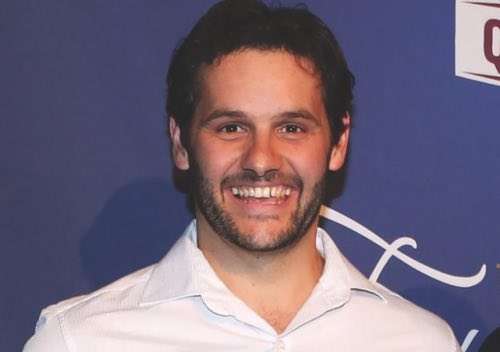
Warwick Cox
Developer, Expedia
Warwick Cox
Getting your customers Hooked with Web Notifications
Our customers are our bread and butter. When we build a website or an app, our goal is to hook our customers in and keep them coming back.
Every time they return means more exposure and in some cases more money. Waz be running through some real world learnings and examples of how to Hook customers in the web with push notifications using the service worker.
Warwick Cox (or Waz), is a Entrepreneur and Developer. Living in sunny Brisbane and working for Expedia. Waz has been in the development space for 6 years now, coming from a marketing and business background. He is passionate about breaking down the barriers of technology by creating tools or services that open business opportunities or for us to all grow as a community.

Isabel Brison
Front End Engineer
Fairfax Media
Isabel Brison
Radical Keyboard Surfing
Keyboard navigation is something of a radical sport on today’s Internet. Chances you’ll make it through a website with nothing but your keys are fairly slim.
But it doesn’t have to be that way. By making sure all interactive elements can be reached (and escaped) through the keyboard and by providing visual evidence of the focused state we can make the web a friendlier place for keyboard surfers. Plus we can implement all sorts of handy shortcuts: surfing is all about speed, right? And avoiding the jaws of the dreaded focus traps. Forget about mice, we’re going to see what it takes to build the coolest keyboard experience ever!
Isabel is a front end developer with a background in art, which provides a great excuse to build all sorts of crazy stuff. She tends to go on at length about accessibility and usability issues, mainly out of a belief that like all good tools, the Internet should be usable in more than one way. She currently works at Fairfax Media.

Craig Sharkie
Developer, TabCorp
Craig Sharkie
Style with Substance
The revolution in JavaScript is not just in ES6 and ESNext, but in the changes that don't make the headlines. String concatenation and forEach iteration don't have the allure of a shadow DOM, but they've changed the way we look at behaviour development.
With the strong trend to Responsive Development, matchMedia is another way the browsers are showing they've got your back. A CSS Developer with a command of Media Queries can shake the way you see your site across viewports, and with matchMedia your JavaScript can make that shake an earthquake.
According to O'Reilly's, Craig Sharkie's intricate knowledge of best-practice JavaScript is apparent in his writing. He began his Development journey as a Fine Arts graduate turned programmer, and has successfully worked with some of the Web's biggest names. Craig discovered JavaScript in 1995 and has been an evangelist for the "good parts" since then. One of those good parts is Australia's largest Developer Community in SydJS.
When he's not demanding the pinnacle of experiences for the Users he works for, and the Developers he works with, he dreams of a recipe finder that never fails to make his wife smile, a world as vibrant as his daughter's imagination, and a rum that would make a pirate blush. And he'll happily skip the rum.
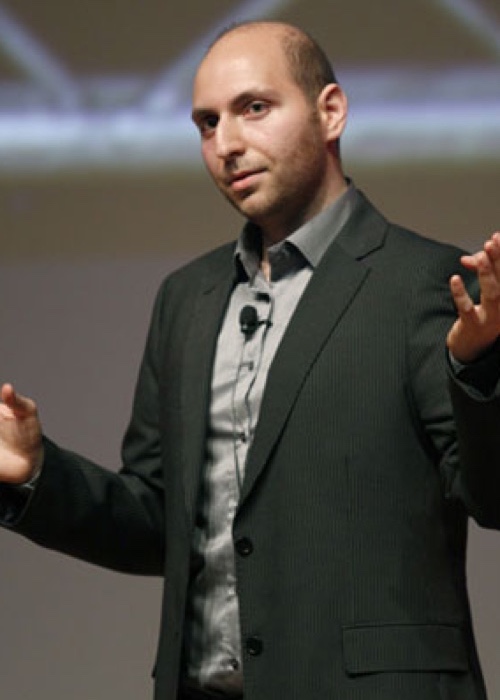
Vitaly Friedman
Editor in chief,
Smashing Magazine
Engineering Stream: Vitaly Friedman
Real-Life Responsive Web Design Development
Yes, we're all talking about Responsive design, and most of us are probably doing it. Yet it’s no easy task to design and build good, fast, and flexible responsive pages. How do you achieve your goal faster? Which front-end techniques should you use to build flexible components? What design patterns should you use and how do you deal with complicated tables, maps, forms, and interactive elements?
Vitaly Friedman, editor-in-chief of Smashing magazine, will present practical techniques and ideas developed in actual practice, and use many examples and pieces of code to illustrate more effective and efficient ways of RWD. Consider it your primer on the state of Responsive Development in 2015.
Vitaly Friedman loves beautiful content and doesn’t like to give in easily. Vitaly is writer, speaker, author and editor-in-chief of Smashing Magazine. He runs responsive Web design workshops, online workshops and loves solving complex performance problems in large companies.
Full Schedule Now available
Download the schedule to see who's on, when!
Masterclasses
Join one of our speakers for Masterclasses on October 27th and 28th, in the lead up to the conference at the HarbourView Hotel in North Sydney, 5 minutes walk from Luna Park, and where we are putting up our speakers.
Masterclasses are $599 for conference attendees and $699 when purchased separately.
Tuesday October 27th

Denise Jacobs
Masterclass: Unfold Your Brain–Skyrocket Your Creative Productivity
As creative professionals, we are called upon to produce and deliver original strategies and solutions to make our companies or clients stand out in the crowd, requiring a high level of creative thinking and generation of innovative ideas. But sometimes constantly having to be “on” creatively can be mentally taxing. Furthermore, standard working conditions often can extinguish our creative fire, making it tough to come up with fresh ideas precisely when we need them most. What is needed is a way to work better so that we can create more.
Through exploring various concepts and approaches, including the neuroscience of creativity, productivity techniques, and emerging practices that spur innovation, we’ll discover not only the ways in which our brains work best, but also what’s behind the times when we feel on fire with creativity and when we don’t. We’ll translate this information into processes and techniques for dramatically enhanced creative productivity. Beware: this workshop challenges the standard norms around concentration, focus, productivity, and may change how you work…for the better.
Topics include:
- The six step process to unfold the brain in order to work better and create more
- Recognizing and expanding idea generating and capturing styles
- Methods for getting the brain into the state where one accesses creative ideas and ideates best
- Leveraging the relationship between collaboration and playing games to foment creative inspiration
- Achieving flow states for optimum creative productivity
- Eliminating the biggest blocks and inhibitors of creativity
- Tools for gathering sources of inspiration that kick-start the creative process
- Applying Design Thinking approaches to getting to finished products faster
The goal of the workshop is to help participants:
- Challenge and replace standard approaches to work in order to be more creative and innovative
- Manage time and eliminate distractions to achieve optimal creative productivity
- Transmute negative stress into eustress to inspire and spur creativity
- Structure time and workspaces to be more productive
- Generate creative ideas when most needed
- Develop and/or regain creative confidence as well as feeling reengaged with work and other creative projects

Eric Elliott
Masterclass: The Two Pillars of JavaScript Workshop
Software is eating the world, the web is eating software, and JavaScript rules the web. Learn why JavaScript's distinctive features make it well suited to its position as the most popular programming language in the world.
JavaScript is built on top of two pillars: Prototypal OO and functional programming. If you don't know these concepts, you don't know JavaScript. The Two Pillars Workshop will take you through an all-day bootcamp where you'll practice several practical applications of each pillar while you build a simple Universal JavaScript App with Node & React.
Learn from Eric Elliott, author of the new book, "Learn JavaScript Universal App Development with Node, ES6, and React".
You'll Learn
We'll start the morning with a quick explanation of why the two pillars matter, take quick detour for an ES6 ROADMAP refresher, and then explore each of the two pillars in depth. Then we'll introduce a sample project before taking a meal break. When we return, we'll kick off a group hackathon project to build a new app using the two pillars of JavaScript. Eric will be available for questions and guidance during the hackathon, and you'll be encouraged to find allies to collaborate with as you learn from the experience of exploring the two pillars together.
Required equipment and knowledge
This workshop is for Web Developers and Front End Engineers who are comfortable with JavaScript. Bring your laptop to work along on the day.
Key take aways
- Prototypal OO in Javascript
- Functional programming with JavaScript
- ES6 Roadmap
- Universal (AKA 'isomorphic') Web apps
Wednesday October 28th
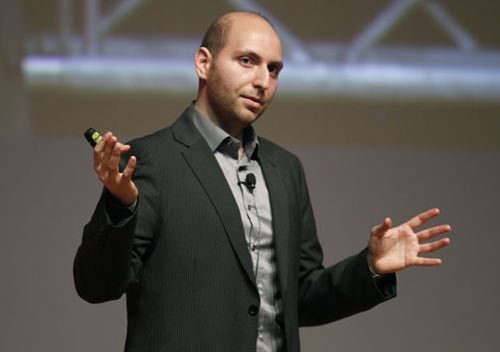
Vitaly Friedman
Masterclass: Responsive Design, State of the Art Techniques
In this full-day workshop, Vitaly Friedman, editor-in-chief of Smashing Magazine, will present practical techniques, clever tricks and useful strategies you need to be aware of when working on any responsive design project. Most techniques are borrowed from mid-size and large-scale real-life projects, such as large eCommerce projects, online magazines and Web applications.
We'll be looking at specific techniques for building well organised, front-end software, and wherever possible this work will be hands-on. Vitaly will introduce theories and ideas for dealing with common problems, and attendees will be assigned small tasks so they can experiment for themselves with these techniques.
You'll Learn
- Effective tools and techniques that can support and enhance your personal workflow when working on any responsive design project
- An overview of clever practical techniques for improving UX as well as performance of responsive sites
- Front-end strategies for scalable, resolution-independent graphics and maintainable CSS code
- Responsive Design Patterns and innovative approaches to designing "responsive modules" such as tables, calendars, multi-level menus, maps and Web forms
- Testing, debugging and maintenance techniques for responsive sites as well as lessons learned from Smashing Magazine's own redesign in 2012
- Technical issues (and solutions) for responsive advertising and responsive email newsletters
- How to optimize responsive websites for better mobile UX, offline UX and print, and
- How the design processes should adapt in terms of the project management, deliverables, performance budgets, team organisation and strategy.
Required equipment and knowledge
This workshop is intended for professional designers, developers and everybody else who is dealing with responsive design regularly or wants to better understand responsive design in general. You should at least be familiar with some basics of responsive design, HTML5 and CSS. Bring your laptop to work along on the day.
Key take aways
- Responsive Design Patterns and innovative approaches to designing "responsive modules"
- Improving the UX & performance of responsive sites
- optimizing responsive websites for better mobile UX, offline UX and print
- Testing, debugging and maintenance techniques for responsive sites

Kitt Hodsden
Masterclass: Front End Workflow Automation — Let’s Get Hands-on
Today’s front end developers have more work to do than ever to create a functioning, responsive, fast, good-looking website. We have differing screen resolutions, browser support, network speeds and other considerations all buzzing around, jockeying for highest priority and attention during development.
Let’s make that development easier by automating away some of the grunt work.
You'll Learn
We’ll cover a start-to-end workflow, along with options to cover other developer cases. Tools introduced and used include yeoman, grunt, emmet, sass (including scout, compass, livereload) alfred, bower, phantomcss (huddle), modern.ie, (with browsershots alternatives) and vagrant (virtualbox). We’ll address responsive web design, review mobile-first development, media queries organization, basics of scripting, browser bookmarks, packaging sprites, and techniques for specific issues like using svg images with png fallbacks.
Required equipment and knowledge
Experience building websites is needed to take full advantage of the workshop. Workshop content will be adjusted to attendees’ needs, covering command line basics and GUI options as needed.
Bring a laptop with a project you want to automate, your site development setup and a modern browser or two.
What to Expect
We’ll send out a questionnaire before the workshop so that we cover not only the general topics listed above, but also the specific requirements of workshop attendees. After we receive your responses, you’ll receive custom instructions on laptop setup, reflective of your chosen operating system and development platform.
Required equipment and knowledge
This workshop is for intermediate and advanced Web developers and designers and Front End Engineers who want to streamline their site development workflow.
Specific details will be provided in the leadup, but make sure you bring your laptop to work along on the day.
Key take aways
- Setting up the automation framework
- Automatic browser refresh with BrowserSync
- Integrating CSS preprocessors
- Sprite generation
- Asset aggregation and compression
- Regression testing
- Asset analysis for redundancy checking
- Command line tricks, scripting

Our new venue
Web Directions 2015 takes place in the the Big Top at Sydney's iconic Luna Park, right on the harbour, and in the shadow of the Sydney Harbour Bridge.
Getting there:
Luna Park is 5 minutes walk from Milson's Point Station. It's also a short ferry ride from Circular Quay. And there's ample parking on site if you really have to drive.
Accommodation:
North Sydney, just a few mintues walk away has a wide range of options, from budget to 5 star. Check out Wotif and Airbnb as well

Opening party
This year's social committee have excelled themselves, planning an amazing opening night party that will feature, along with an the usual excellent array of refreshments– iconic Luna Park rides and attractions like Coney Island and old school amusement park inspired catering.
And, to make it even more fun, your family is invited. From 5pm to 7pm we have exclusive access to various rides, so bring the kids along too (on us)!
The opening night party is brought to you by Braintree_Paypal

Speaker dinner
Exclusively for Gold ticket holders, join our speakers at one of Sydney's finest restaurants, Aqua, high above North Sydney Olympic Pool (home to more world records than any other pool in the World).
There'll be three exquisite courses, matching wines, and the company of the finest minds in our Industry in an intimate setting.
Find the conference pass for you |
Gold Pass
|
Silver Pass
|
Classic Pass
|
Speaker Dinner October 29Join our speakers at one of Sydney's finest restaurants, Aqua, for a three course dinner with matching wines to remember. |
|
||
Conference October 29–30
|
|
|
|
ExclusivesA selection of exclusives to enhance your conference experience. |
|
|
|
Videos |
|||
|
|
||
|
|
|
|
|
|
|
|
Find the conference pass for you
Gold Pass
Conference
Speaker Dinner
Exclusives
- $1,699
Silver Pass
Conference
Exclusives
- $1,499
Classic Pass
Conference
- $1,299
Come together
Teams get more
Many teams have long attended Web Directions together, part offsite, part training, all inspiration. Now, sending a team of 5 or more to Web Directions is even more valuable. For the price of a classic ticket per team member, you'll get:
- A Silver pass for each attendee
- A Device Lab Pro with Ghostlab license for the team.
- A team license to all the past Web Directions conference videos, as well as videos from Web Directions 2015. Over 200 hours of in-depth, high quality presentations for your whole team.
And if you send a team of 8 or more, you'll also get an in-depth session with founder John Allsopp, at your offices, or online. John will outline what he thinks the most important trends are right now, provide feedback and answer questions, whatever would help your team the most.
Just use the code team when you register.

The Best Coffee
The "world's best conference coffee" returns in 2015.
From the roaster of The 2014 Good Coffee Guide's best Barista in Sydney, Sample Coffee Co.'s Reuben Mardan, we'll be serving up espresso, filter and cold drip coffee the likes of which you won't get at any other conference, anywhere.
Brought to you by the awesome ansarada
The price of anything is the amount of life you exchange for it
Henry David Thoreau
We know you are busy
Creating and managing a great team, exploring the creative limits of today's technology, and tomorrow's. We know your life is full to the brim with meetings you can't miss.What we'll deliver is ROT (return on your time). We'll help you save time avoiding rabbit holes of hype that doesn't match reality. We'll help you invest your time wisely in the technologies, ideas and projects that will deliver for your company, clients and partners.

The Freshest Juice
Power up with super fresh juice at the Expedia Juice Bar. Featuring in season fruit juiced on the spot, we'll keep you topped up with vitamins, and raring to go.
The Juice Bar is brought to you by Expedia
About Us
Co-founded and now run by John Allsopp, Web Directions has for over a decade brought together leading developers, engineers, visual, IxD, UX and product designers, Art and Creative Directors, indeed everyone involved in producing web and digital products to learn from one another, and the World's leading experts across this vast field.
We spend our lives thinking about what comes next, keeping up with trends in technology, practices and processes, and filtering the hype, to make sure you don't miss trends that matter, and don't waste time on hype that doesn't.
We promise attending one of our events will leave you significantly better versed in the challenges you face day to day, and in solutions for addressing them.
John Allsopp
 John Allsopp has been working on the Web for over 20 years. He's been responsible for innovative developer tools such as Style Master, X-Ray and many more. He's spoken at numerous conferences around the World and delivered dozens of workshops in that time as well.
John Allsopp has been working on the Web for over 20 years. He's been responsible for innovative developer tools such as Style Master, X-Ray and many more. He's spoken at numerous conferences around the World and delivered dozens of workshops in that time as well.
His writing includes two books, including Developing With Web Standards and countless articles and tutorials in print and online publications.
His "A Dao of Web Design" published in 2000 is cited by Ethan Marcotte as a key influence in the development of Responsive Web Design, who's rightly acclaimed article in 2010 begins by quoting John in detail, and by Jeremy Keith as "a manifesto for anyone working on the Web".
Code of Conduct
For over a decade, we've worked hard to create inclusive, fun, inspring and safe events for the Web Industry.
As part of our commitment to these values, we've adopted a code of conduct for all involved: ourselves, our speakers, our partners and our audience.
If you have any concern or feedback, please don't hesitate to contact us.